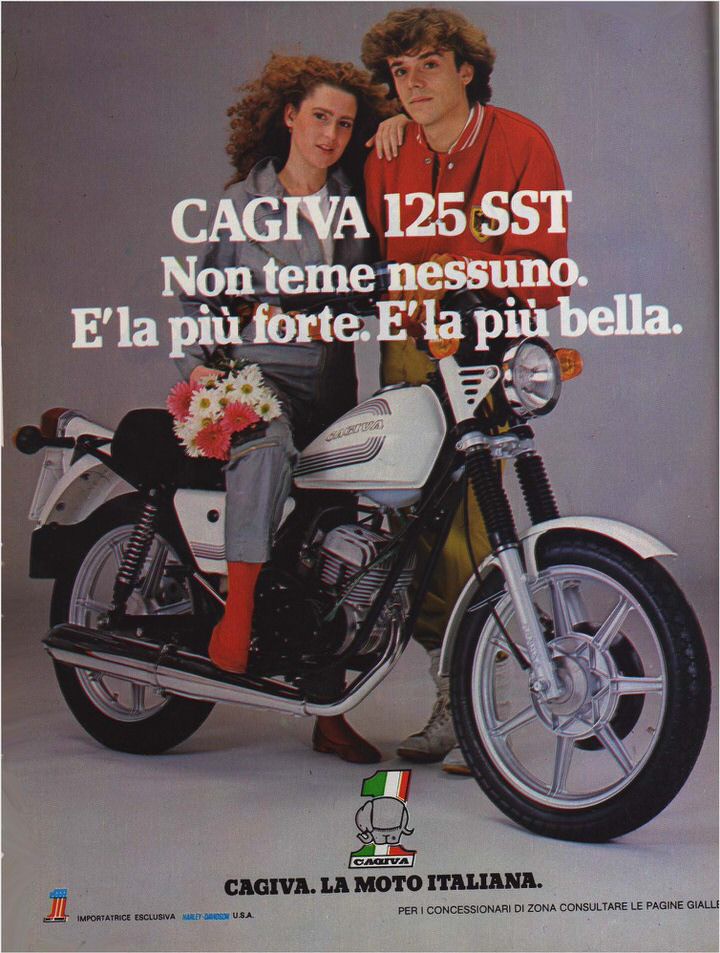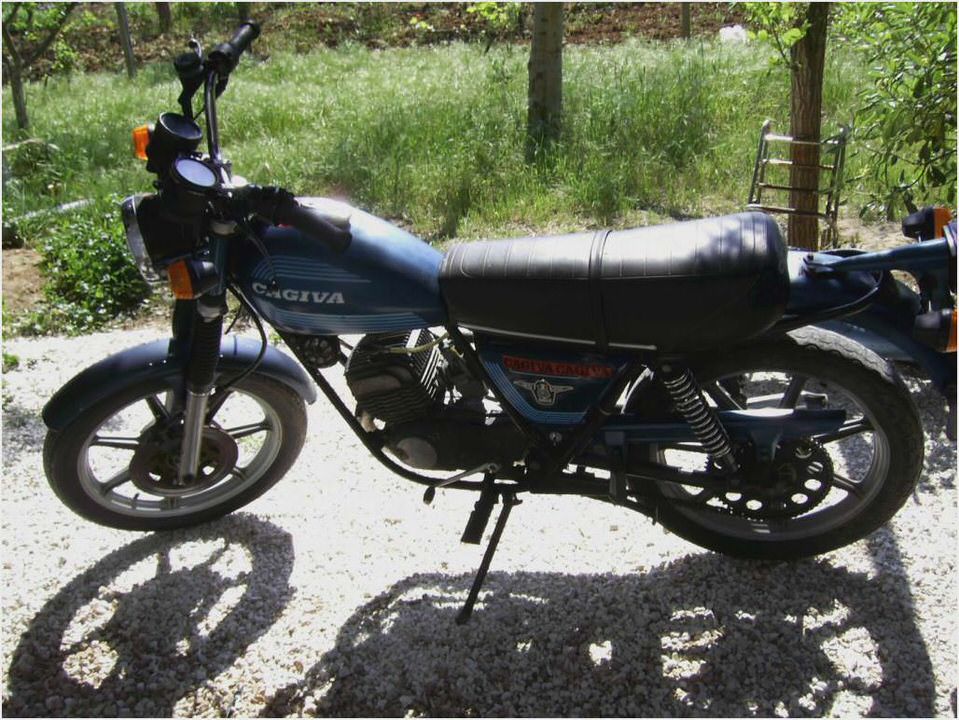History and evolution
In 1960 the American Harley Davidso n and the Italian Aermacchi (previously named Aeronautica Macchi) from Varese, form the companies AERMACCHI HARLEY DAVIDSON for production of light motorcycles in Italy. Since 1973 the brand becomes AMF-HD, Since 1973 the brand becomes AMF-HD . when the American Machine Foundry took the place of Aermacchi. Motorcycle production stops in 1978, when Harley Davidson decides to abandon the Italian production.
In the same year Cagiva, born as small metal parts factory founded by Giovanni Castiglioni, relieve the company to continue the motorcycle pruduction. Below is a brief history of his first workhorse, the SST 125 . 6F SS 125 THE REAL NAME
6F = SS 125 e SST 125
6A = SS 350 (4 stroke)
8F = SST 350 (2 stroke)
THE ORIGIN (1975-1977)
AMF-HD SS 125, year 1975 (Picture from: www.aermacchi-world.de)
Cagiva, starting from Aletta and Ala range, had understood in which direction it was moving the market, both to meet the needs of the public is holding onto the fierce competition of the houses in Italy and abroad. The public, especially youth, were directing the most versatile enduro and on models with increasingly modern engines. HD erano engines now obsolete.
In recent months of production the Cagiva made a restyling of the SST not entirely convincing: the Aletta SST 125 was renamed ALETTA OFFICIAL . not changed anything except the bodywork bicolour and coloured seat, usually olive green or hazelnut. The adhesive disappeared and was left only one on the left and right caskets to remember the name of the template. Moreover the Cagiva was already all pointing to the new motorcycle road that would have supplanted the SST, namely Aletta Electra.
The SST had already played his part and the production was abandoned after nearly 10 years of success.
CAGIVA ALETTA OFFICIAL, last SST (from web)
SX engine
The SST ‘s is derived from an SX engine (year 1971 ) that equipped previous Aermacchi HD models, including Z90. X90. SX125. SS125.
Over the years has been modified to fit on the various models such as the addition of further attachment to the frame to the 125. The serial number identification is printed up to the crankcase covers. On the left case Cagiva SX i sprinted. while the right case is printed with the serial number itself. It has the following format :
Y yyxxxxx
where Y is a fixed point which stands for year , yy indicates the last two digits of year of construction and xxxxx is the number of units produced in that year. For example Y 8302603 indicates the engine No. 02603 manufactured in year 1983 .
The new era
NEW CAGIVA MODELS
Can not miss a brief overview of successive Cagiva models that have become icons of young peoples. The ALETTA ELECTRA 125 (1984), the road bike with sinuous and modern line, new chassis and new engine gearbox, electric starter and mono shock absorber Soft Dump; the mentioned ALETTA ROSSA 125 (1983) (a Cagiva SXT evolution) an enduro with water cooled engine and with mono shock absorber Soft Dump object of worship and fashion for young people of that time; the Aletta Rossa sequel — the ELEFANT 125 produced since 1984 to 1985 (first series), another enduro dakar style, equippped with large fuel tank.
V.I.N. numbers are (first two digits):


- Cagiva Repair and Maintenance – Workshop Manuals
- Elefantman’s Cagiva Elefant/Ducati Elefant Pages
- PROJECT BIKE: 1985 Ducati Cagiva 650 SS Alazzurra with Pantah Motor
- New Cagiva Xtra Raptor 1000 Bike 2011
- 1978/79 AMF Harley Davidson / Cagiva SST 250

